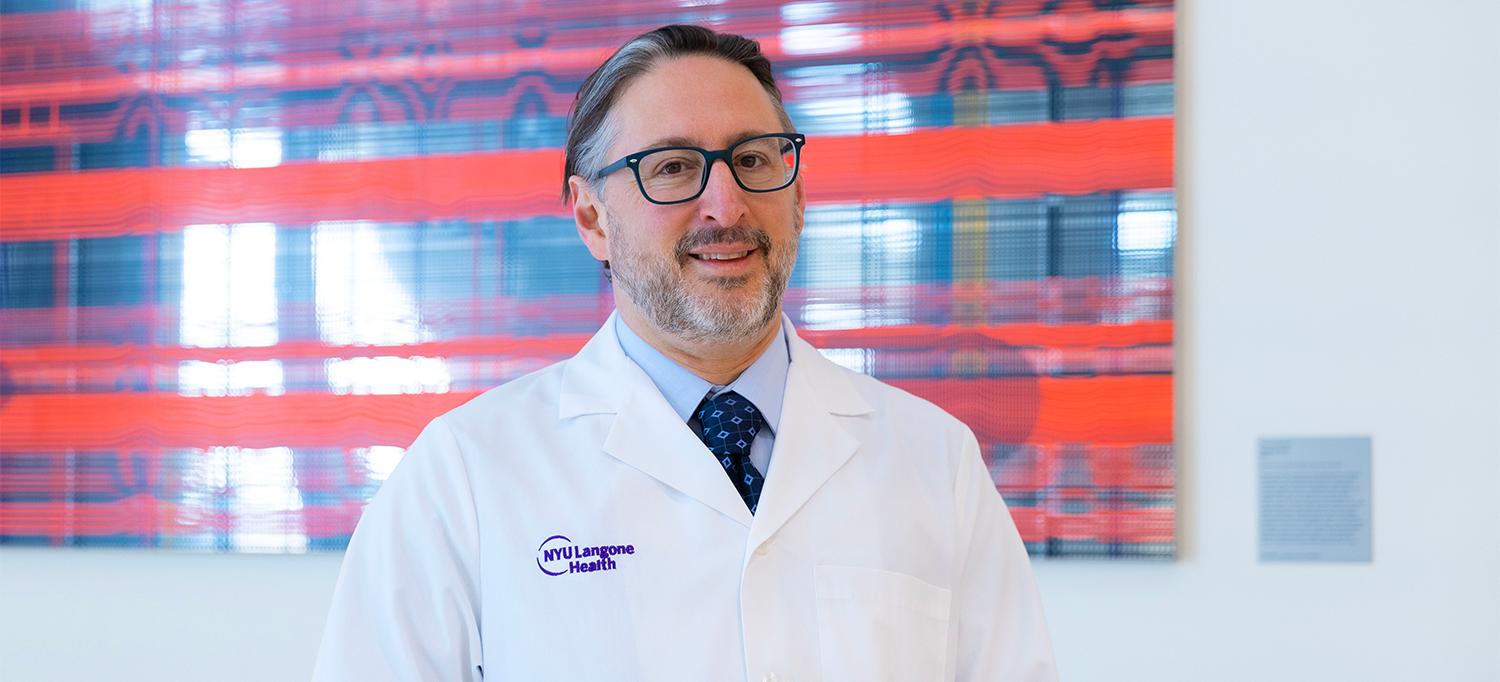After Identifying a Problem That Affects Patients, Dorry L. Segev, MD, PhD, Marshalls a Diverse Skillset to Tackle It

Dr. Dorry L. Segev says he draws on whatever disciplines are needed to solve patients’ complex medical problems, and his robust training in several fields serves him well.
Photo: NYU Langone Staff
Dorry L. Segev, MD, PhD, whose global efforts have helped advance transplantation medicine, heads the new Center for Surgical and Transplant Applied Research at NYU Langone Health. The center facilitates a broad range of clinical research in the Department of Surgery at NYU Grossman School of Medicine, the NYU Langone Transplant Institute, and throughout the entire health system to bridge gaps between clinical practice and scientific research. Among other research objectives, it aims to innovate protocols that expand eligibility among patients previously deemed ineligible for transplants.
A leading expert in transplantation, Dr. Segev is a professor of surgery and population health at NYU Grossman School of Medicine, and serves as vice chair of research in the Department of Surgery. In addition to his doctorates in medicine and clinical investigations, he holds degrees in electrical engineering, computer science, and biostatistics, and has completed fellowships in transplant surgery and molecular biology. Dr. Segev’s proficiency in numerous fields makes him a true polymath—a person with wide-ranging knowledge who can draw on their expertise in multiple complex subjects to solve specific problems. Here, he describes the journey that led him to acquire such diverse skills, and how he integrates his broad knowledge to advance medicine and patient care.
From Pianist to Software Developer
At age 5, I was on track to become a concert pianist and competed nationally. Then, at 10, I had an epiphany that I didn’t want to spend 5 hours a day practicing. Since I now had free time, I began attending classes with my mother, who was pursuing a master’s degree in computer science. I loved it! By age 13, I was doing freelance software development as a middle-schooler in New Jersey.
To Physician
I studied music and computer science at Rice University. Then one day we performed a musical I wrote at Texas Children’s Hospital. I was touched by the interactions between the hospital staff and their patients, and the resilient spirit of the kids. Suddenly, I didn’t want to spend my days writing computer code. I wanted to help people more directly. So, I pivoted to medicine.
To Surgeon
I set my sights on surgery because it’s very hands-on, and as it turned out, I was good at it. Then I took a research elective, looking for clever ways to distinguish cancerous thyroid lesions from benign ones. I was drawn to building a broader biological understanding of disease.
To Epidemiologist
After completing my surgical residency and fellowship at Johns Hopkins University, and then doing basic science in a Harvard lab, my passion for research led me back to computers. My mentor at Johns Hopkins was Robert Montgomery, MD, DPhil, now director of the Transplant Institute and chair of the Department of Surgery at NYU Grossman School of Medicine. He advised me to get a PhD studying biostatistics and epidemiology, and I did. During my fellowship, I joined Dr. Montgomery and his team in a massive effort to pioneer “kidney exchanges,” in which living donor kidneys are swapped so each recipient receives a compatible transplant. To have a major impact, we used predictive modeling to show the federal government how the process would save lives and expenses by reducing the number of patients waiting for transplants.
To Policy Pro
Our work was eventually published in the Journal of the American Medical Association and helped lead to the passage of the Norwood Living Donation Act in 2007. I have a photo in the Oval Office of me with President George W. Bush, who signed it into law. Since then, 15,000 kidney transplants have been performed via exchanges. This milestone fueled my desire to impact other government policies in relation to patient care. I later wrote the HIV Organ Policy Equity (HOPE) Act, signed into law by President Barack Obama to legalize organ donation by people living with HIV, and I influenced policies to improve SARS-CoV-2 vaccine efficacy in people who are immunocompromised.
To All-Purpose Problem-Solver
My research is driven by identifying a problem that’s affecting patients, and then drawing on whatever disciplines are needed to solve it. One of those problems is the acute national shortage of donor organs. I’m thrilled to say that we’re finally closing in on a sustainable solution. Within the next 5 to 10 years, I think we’ll perfect a way to make pig organs fully compatible with the human immune system. Pig organs have long been hailed as the future of transplantation—a future that somehow never arrives—but now we’re truly turning a corner. It’s hard to overstate the impact that this technology will have on medicine.